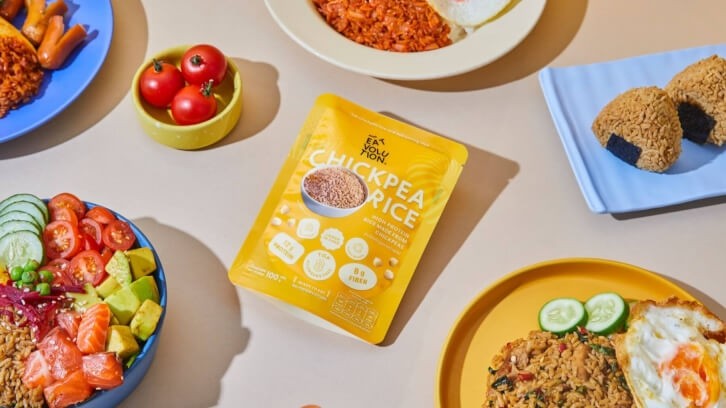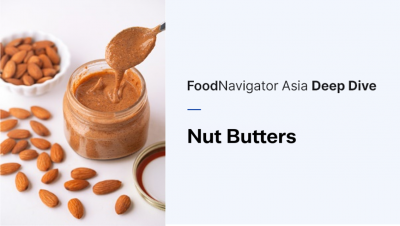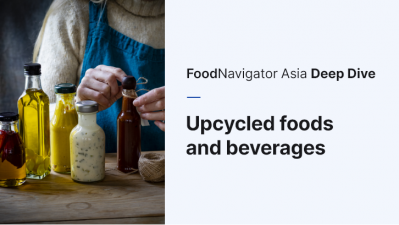Eatvolution taps on high-nutrient and prebiotic-enriched chickpea rice to capture Thailand’s health-conscious consumers

Eatvolution’s rice alternative is a blend of chickpeas, great northern beans, golden flax seed and pea protein, grinded and made directly into a rice format.
“We hope to establish this as an alternative for consumers that are health-focused and looking for better options, including vegetarians and diabetics,” Eatvolution Co-Founder told FoodNavigator-Asia at the recent ThaiFex-Anuga Asia show in Bangkok.
“There is increasing demand for rice alternatives here, which can be seen with more variants such as quinoa rice, konjac rice and cauliflower rice emerging – but most of these are lacking in terms of either nutrients or texture, which chickpea rice can provide.
“In addition to the chewy texture, it also provides high protein (12g per serving), high fibre (8g), 30% to 50% lower carbohydrates than white rice, prebiotics from the chickpeas, and is top eight allergen free from common allergens such as soy, nuts, shellfish, eggs, dairy and more.”
Eatvolution has also designed its first product to be in line with the convenience trend, developing this as a 100g ready-to-eat (RTE) pouch that contains two servings each.
“This retort RTE format means that all consumers need to do is tear open the pouch and put it in the microwave, and it is ready,” she added.
“We have developed this such that the shelf-life is also long enough – 18 months - to be kept at room temperature either on shelves or in pantries comfortably.”
Eatvolution’s chickpea rice was launched just a few months back in March 2023, but is currently already available via various online platforms including LINE and Lazada as well as several foodservice outlets in Thailand, and the firm is in negotiations over pricing and formats to enter various local supermarkets and convenience stores moving forward as well as eyeing export markets.
Raw revolution
As with every new product, Eatvolution’s major challenge has been in developing consumer awareness and interest in its chickpea rice despite the obvious health benefits, particularly challenging when facing off against such a strong staple as conventional rice.
“Being so new to the market, definitely we know that a lot more education is required in order to boost consumer awareness of the chickpea rice,” she said.
“But there are many obvious health and nutritional benefits beyond that of white rice, and we believe that including these as part of daily staple foods is a good point of attraction.”
The firm is currently also developing a raw version of the chickpea rice to further integrate itself into consumers’ regular dietary and cooking habits.
“We are in the process of developing this raw version, and are working now to confirm the shelf life of this product,” she added.





















